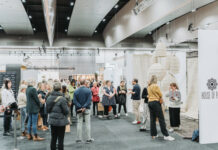A Queensland family swapped their two-story home in the suburbs for a 20-acre farm restoration project in Ipswich helping them to become financially self-sufficient. The newly opened Twigley Farm hosts events and short stays with the family now working on the property full-time and describing the tree change as the best decision they ever made.

Amanda and Paul Arnell-Smith, their daughter Caitlin (26), and son-in-law Jamison Porter (26) spoke exclusively with Machines4U with their advice for others looking to make the swap.
The farm renovation, restoration and regeneration has taken nearly four years to complete at a cost of $500,000 and included the huge task of moving a 1900 Queenslander home from Cleveland to Ipswich, as well as restoring the original farmhouse, one of the oldest in the district, to its former glory.
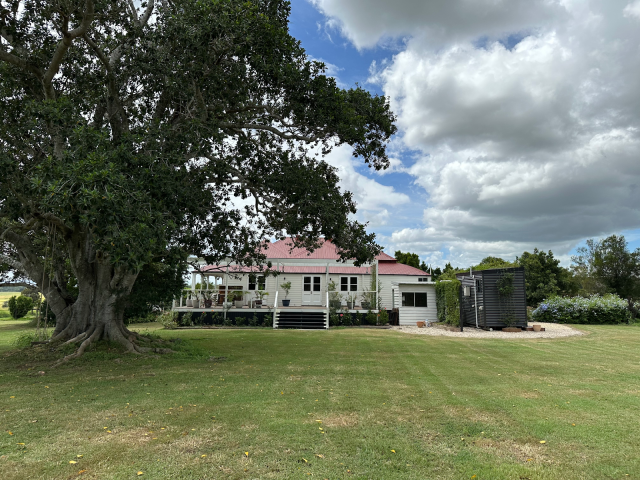
As the final renovation draws to a close, the family couldn’t be happier as they embrace slow living and look at how the property will support both couples financially through Airbnb rentals and possibly events.
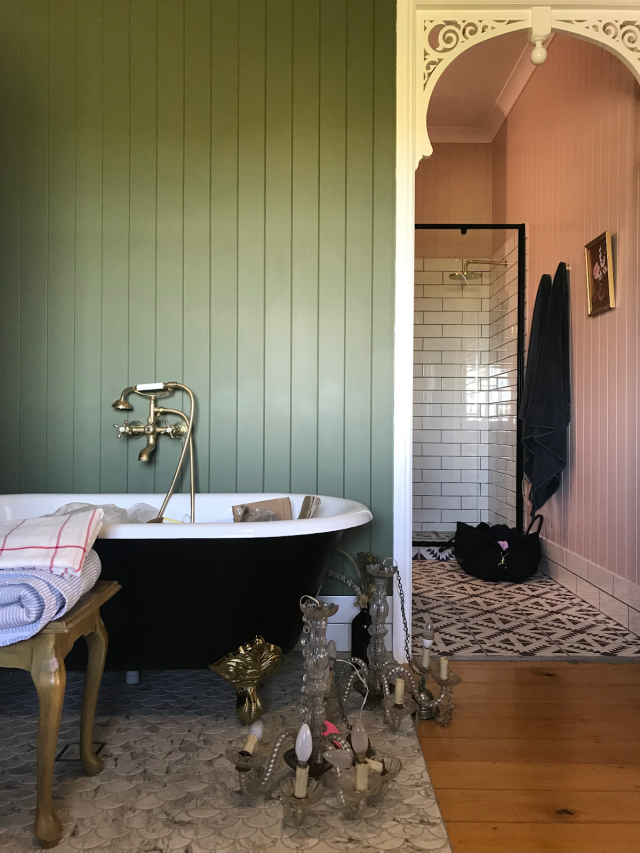
Twigley Farm, located in Haigslea, Ipswich, 45 minutes from Brisbane, was once a seedling nursery and was in need of a lot of work. The property now features the original restored farmhouse, a conservatory, the relocated Queenslander, an outhouse for glamping, a raised garden bed, a dam, an orchard and more.
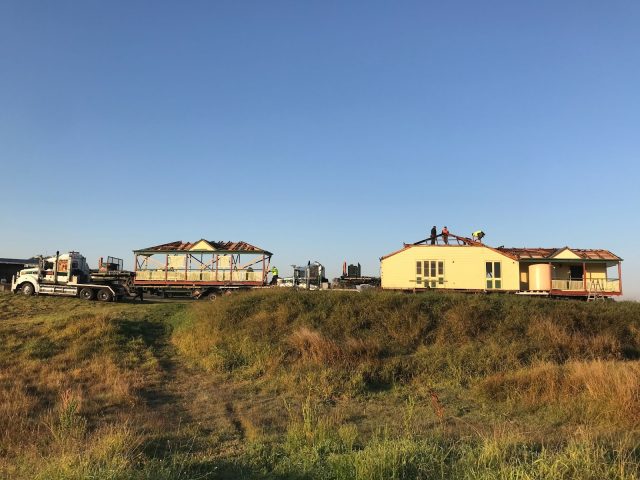
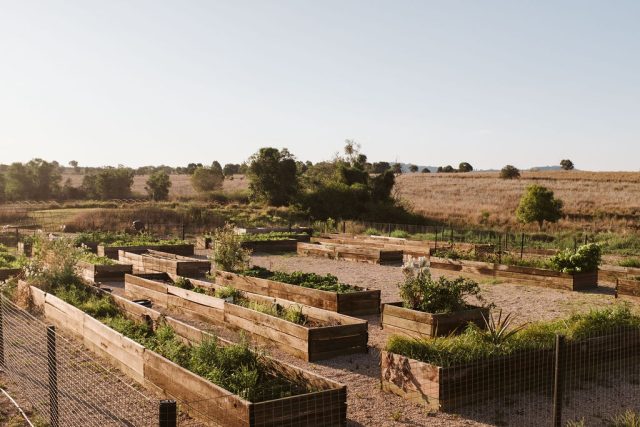
“When we visited the property our first thought was there is a lot of work to be done. The original Queenslander had some questionable renovations but it had amazing character features like pressed metal ceilings,” said Caitlin. “The land was either ruined by horses or was covered in plastic that had been there for over 10 years. But, it ticked all of our checklist, was on budget and we could see its potential with a lot of hard work.”
Adjusting to country life took some time
The family knew they wanted to work in accommodation together after backpacking around the world and decided the countryside would be a great place for their next project. Their non-negotiables for the property included a location no longer than a 45-minute drive from Brisbane, a “cute” town that they and future guests would love, a statement tree, an original Queenslander and a breathtaking view.
After searching for two years, they finally sold their home in Manly, Queensland, and made the move outback in August 2020. “At first we felt a bit out of place in our new country town. Walking into the local pub, people would stare at the new city slickers which was funny! But soon enough we met welcoming neighbours and were a part of the community,” Caitlin explains. “When things were hard we did have our moments but the pros massively outweighed the cons. Sometimes things fail but sometimes they work and after nearly four years, we wouldn’t go back.”
Removing plastic from the land
Twigley Farm struggled to attract a buyer and was on the market for a while as it was covered in weed mat plastic, but this family saw the vision.
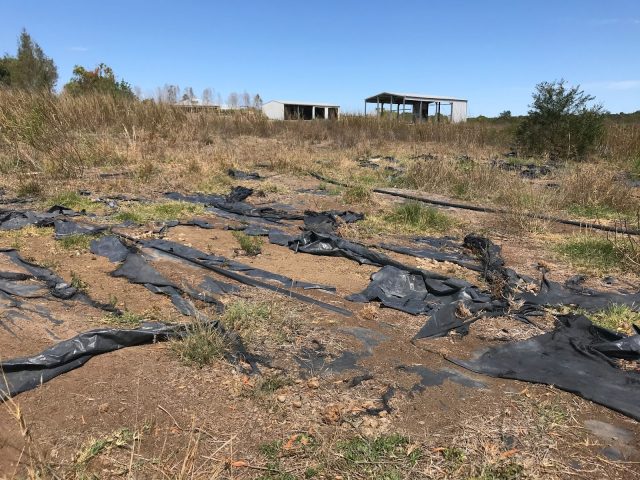
“We would talk about our grand plans for paddocks that just looked hopeless,” Caitlin said. “I wouldn’t be surprised if people thought we were crazy.” With such a big undertaking, the family didn’t know how they would go about bringing their vision to life but they knew their priority was to remove the plastic first.
Caitlin said: “In hindsight, we probably didn’t have a clear goal of where to start. We were learning on the job and everything seemed like a priority so we started lots of jobs all at once. Ten-year-old trees were firmly in the ground with seedling plastic pots still around them. One of our first jobs was removing all of the plastic and the literal mountains of plastic pots and trays. Quotes to get it removed were around $60,000. With being locked down due to COVID and help from neighbours with big machines, we were able to clear the farm for a quarter of that.”
In their first year, they invested in getting their horse paddocks ripped and seeded. “They were dust with no feed for our horses so it was a priority. The land was once dead and ruined from overgrazing but now it is thriving and we can’t keep up with the mowing and slashing!”

Bringing wildlife back to the property with an orchard
The family has already planted over 400 trees as one of the main goals was to bring nature back, giving wildlife a place to call home. There’s plenty of birdlife at the farm and this year, the family plans on creating wildlife shelter belts by planting more trees in strategic areas.
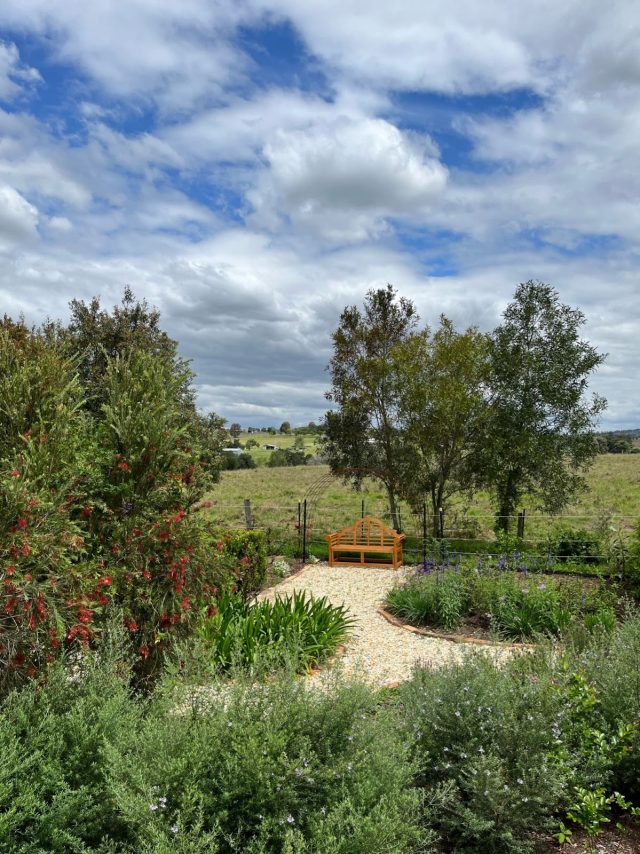
Caitlin adds: “We have planted a small orchard and have been planting out our boundary fences and creating windbreaks as we can get extremely harsh wind. At the start, planting was a very hard job. Our soil is clay and for a while we didn’t get any rain, meaning trees had to be hand-watered. Making holes in the ground was pretty much useless without a tractor auger. Some days were spent just watering. Now, nearly four years on, a lot of those trees are maturing.”
With no background in farming or agriculture, the family taught themselves how to grow food and flowers from YouTube videos, Facebook groups and a lot of trial and error. Amanda was also passionate about food and even in the suburbs had grown a lot of her own produce including avocados, tomatoes, mangoes and herbs.
Making the interior as beautiful as the exterior
As the grounds were brought back to life, so were the buildings that sat upon them. With a background in fashion styling and graphic design, plus a passion for interior design, Caitlin led the design, creating everything from scratch herself.
She said: “My parents financially allowed me to go with my gut and create something that I thought reflected the story I wanted to create for Twigley Farm. I loved the idea of something so rustic on the outside being surprisingly beautiful on the inside. I love mixing vintage and new so this very much inspired my styling choices.”
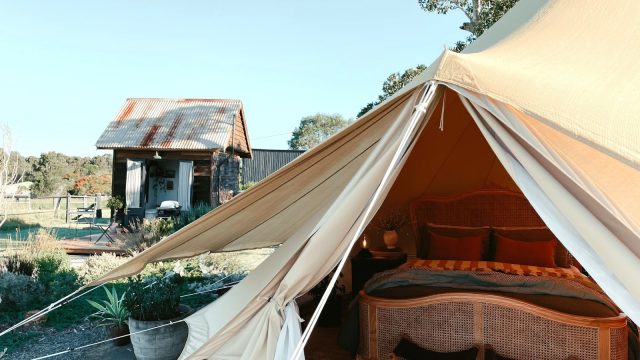
Caitlin kept the same feel for Linnings House, which was built by one of the first farming families in the district. Located on Linnings Road, the family that built it were dairy farmers and used to ship their butter back to England.

The house, which sleeps six guests, was renovated over six months by a local father and son building team with Caitlin keen to pay homage to the historic nature of the property.
She said: “The interiors feature bold colours, antique fittings, a cosy fireplace and a black clawfoot bath. We are hoping to open bookings for winter this year. We have already hosted photoshoots and small events in the space.”
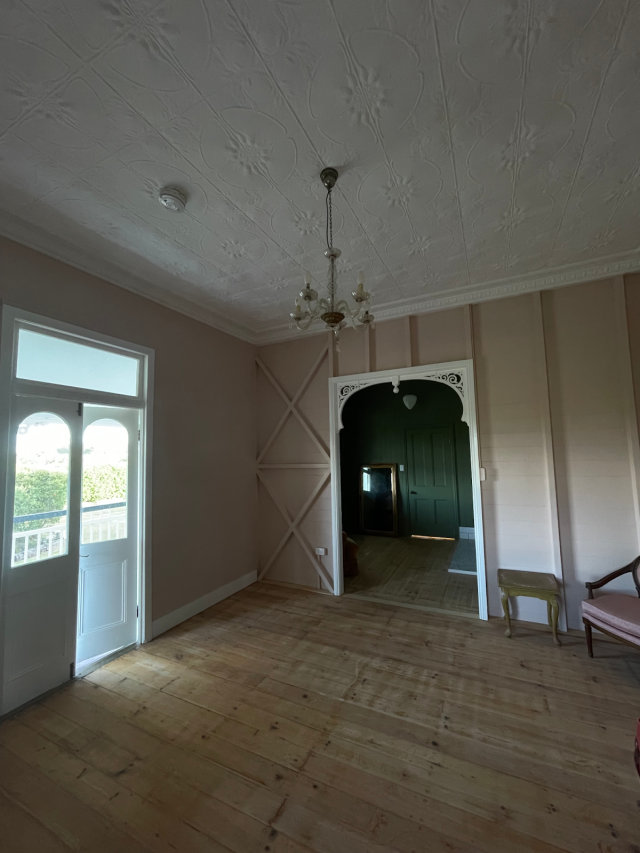
The trials and tribulations
The hardest parts of the renovation were money and project management. The family said with so many tasks to complete, it was hard getting stuck into one and not distracted by another, particularly when there were delays and setbacks, all while juggling outside full-time work for three of them!
Moving the 1900 Queenslander from Cleveland to the property was particularly difficult even though they used a house removal company. Caitlin said: “We were probably a bit naive about how easy it would be. There were lots of delays and hidden costs. Renovating a Queenslander is always interesting because you never know when you’re going to come across rot or termites in all of the timber. If we were to go back in time we would probably build from scratch.”
The family also knew that going into business with each other was going to be testing, let alone undertaking a huge renovation and occasionally living together. But working to everyone’s strengths allowed for the outcome to be as beautiful as it is. Caitlin said: “We have had our ups and downs but focusing on clear boundaries and work/life balance is key. Also being clear on everyone’s personal business goals helped.
“My dad Paul and I had experience working together on our Bali accommodation, The Villas North Bali. And my parents also previously owned an accounting business that they ran together. We all have different skill sets so knowing everyone’s limitations as well as strengths was key.”
Turning the land profitable with Airbnb.
In 2022, the family opened their first glamping Airbnb which has proved very popular. It wasn’t in the plan originally but the idea came naturally as Caitlin wondered about what to do with the little outhouse that she walked by every day.

She said: “The old outhouse inspired me. It is one of the first things you pass on the driveway to the farmhouse, so seeing it every day makes you get creative with what you could potentially do in the future. The Forager Glamping was designed with slow living in mind. Soak in the clawfoot bath, relax by the fire, and read a book under the fig tree.
“Guests always note how thoughtful the space is. We have had multiple engagements and anniversaries and have already hosted over 150 bookings.”
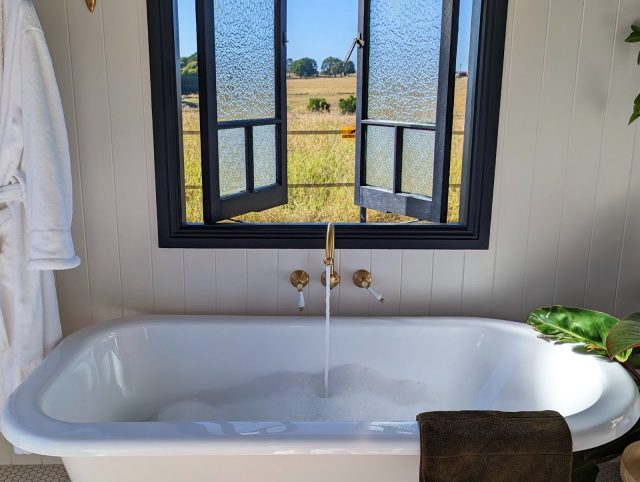
Prices at The Forager start from $330 per night for two guests with Saturday bookings full until August which has been a pleasant surprise for the family. Twigley Farm also hosts weddings, yoga classes, paddock dining, photoshoots and more, and these bookings are taken on a case-by-case basis.
Making the final edits to the farm
With the renovations 95% complete, the family plans to extend their events and short-stay offerings soon.
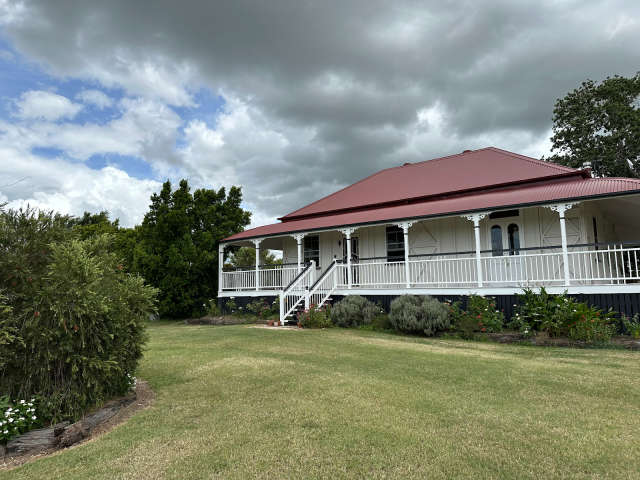
Caitlin adds: “We plan that the property will support all of us through Airbnb and possibly events as we have recently started working full-time on the farm. As we move forward into this year, we’re making more decisions about how events fit into the property and what that might look like. We also have many photographers come to the farm for photoshoots and we’re also looking into how to expand that source of income.
“We are currently working on the original farmhouse right now. We’re sanding the original hardwood floors and then we’re onto styling: the best bit! We’re hoping for a winter release.
“After that, we will be building our chook/goose house (to be named Cluckingham Palace) and we have a few ideas about extending our orchard and vineyard and potentially building a jetty in our dam. We have some other bigger plans but they are in very early stages and we’re working out our cashflow before we go any further.”

Embracing slow living
With the renovation, restoration and regeneration of Twigley Farm drawing to a close, Caitlin says the family has embraced slow living.
“Slow living can be very hard to achieve as it feels like there is always something to be done. But it is always our goal. You get reminded to slow down when you look out at the cattle grazing in the paddock, the wind blowing through the long grass, or the incredible sunset while you’re feeding the horses. Being surrounded by so many restful natural elements, it would be hard to not slow down.”
Caitlin says it’s exciting making a tree change but is encouraging those who are thinking of doing the same to plan ahead carefully. She advised: “If you’re anything like us, we were very excited about all our future plans. This is a good thing, but make sure not to get distracted. It may be obvious but make sure to figure out your priorities first. If your project is similar to ours, sometimes it can feel a bit overwhelming with so many different ideas and projects.”
For more on Twigley Farm
Machines4U is an online marketplace that connects advertisers with users looking for everything machinery.
The post Family swaps suburbia for remote farm life with no regrets appeared first on The Interiors Addict.
theinteriorsaddict.com




